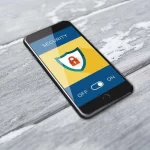The latest IT developments and the improved use of cloud technologies allowed the company’s employees to leverage and use their personal devices to access their business system and data. This job productivity has resulted in Bringing Your Own Device (BYOD) program, making sharing knowledge and full tasks more straight forward for the workforce.
BYOD stands for “Bring Your Own Device” for those who might not already be familiar with it, and it applies to the practice of enabling workers to bring and use their own computing/mobile devices—smartphones, tablets, laptops, etc.—within the office to be used for work purposes, including allowing them to link to the secure network of a company with these devices.
Looking at surveys, most organizations around the world have allowed BYOD to take advantage of what it provides to some degree. These include maintaining employee satisfaction, reducing the cost of infrastructure, increasing quality, and opening up opportunities to innovate. Nevertheless, BYOD’s growing popularity can be difficult to secure remote work, as transferring corporate data to the cloud is a dicey business when data is not adequately secured.
The myriad use of smart devices such as smartphones, tablets, and wearables by employees also paves an entry point for cybercriminals to exploit and hack systems designed to target corporate data. Several businesses have seen a lack of visibility in even simple mobile applications like email, according to a survey. So, organizations need to understand and monitor user behavior at all endpoints to safeguard BYOD. And if they don’t, companies are vulnerable to unauthorized data sharing, malevolent access, and unable to recover or delete downloaded data from devices lost or stolen.
Here are some of the top security techniques businesses can use to secure BYOD.
Mobile Device Management (MDM)
The management of mobile devices is used to describe the administration of mobile devices. Imposing security controls around the business-owned computers is usually preferred by large corporations. MDM incorporates the process of introducing, monitoring, securing, integrating, and managing devices in the workplace, allowing companies to achieve their organizational network while maximizing mobile app features. But, if the right resources are not in the right place, it can be challenging and time-consuming for a business.
Mobile Application Management (MAM)
Mobile application management software helps businesses to introduce and execute business policies on mobile devices. Unlike MDM, MAM generally focuses on protecting enterprise-provided applications involving confidential data. It offers a more granular way for IT managers to monitor and secure business data that is essential to BYOD. Since bringing your own device framework has increasingly paved the way for organizations, MAM is sometimes used to secure access to mobile data. Despite this, it has its own drawbacks, since it does not protect, some prominent cloud apps like Gmail, Dropbox, Slack, among others.
Agentless Mobile Security
Agentless mobile security solutions secure the data without having to install something on an employee device. Such systems have the potential to provide MDM functions such as data loss prevention and the remote wiping of business records. Companies such as Bitglass, which is an agentless CASB (Cloud Access Security Broker) provides organizations with full visibility and control over their data, even when accessed from personal devices. CASB is a policy implementation point that includes data protection on any system, anywhere in the cloud. As cloud services and BYOD usage grow, the prevalence of agentless solutions will also continue to increase.










